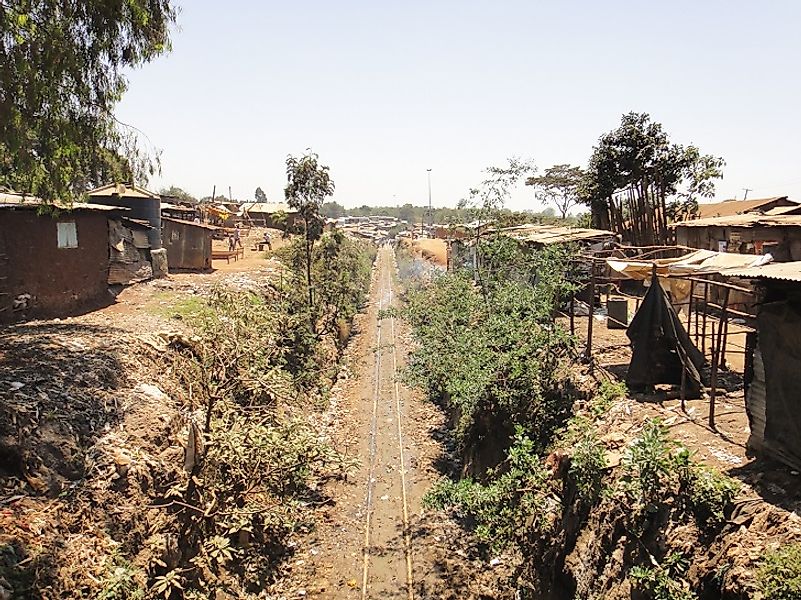What Are Shanty Towns, And Where Are They Found?

5. Characteristics
Shanty towns are also known as squatter settlements. These improvised housing developments are often made up of corrugated metal, plywood, cardboard boxes and sheets of plastics, with these impromptu homes often called shacks. The characteristic features of these shanty towns are that one can see them near the parks, the periphery of the urban cities, railroad sites, and river settlements. There is no urban planning or any house number and even no street name. Moreover, they even lack the basic amenities of the life. The most prominent cases of fire occur here, and it is almost difficult to reach because of uneven street planning.
4. Historic and Modern Examples
Shanty town history in the U.S. dates back to the year 1929 when the unemployed people were thrown out of their houses, and they started building these shanty settlements. In the year 1930, when the economy saw a setback, the condition also worsened as more and more people settled here. As these shanty towns were first developed in America, so they were known as Hoovervilles but, by the year 1940, as the economy recovered so too did the conditions. The examples from the developing countries include Asia’s largest shanty town, which is Orangi in Karachi, Pakistan, and many others across South Africa, Haiti, Kenya, India, and Bangladesh. In the developed countries, these can be found in some parts of the European Union, Spain, the United States of America, and France.
3. Sanitation and Disease
Shanty dwellers suffer from sanitation problems, and diseases are caused by the poor upkeep in these shanty towns. They have to drink poor quality of water, which results into diseases like Cholera and Typhoid. Even some of the natural disasters may occur in the areas formed near the hillsides which can result in death sometimes due to hill slides. As there is sanitation problem and due to lack of toilets or any kind of proper sewage pipes, the human waste becomes the breathing ground for mosquitoes and diseases.
2. Economy and Crime
Areas with shanty towns often pop up where the economic output is lower, and there are minimal levels of access to schools, hospitals, and other needful facilities that are often seen provided by the government and the private sector alike in more affluent areas. The income rate per capita of a person is low as the residents are often officially unemployed, and they work as a menial labor or housekeeper for cash in hand for a particular work in most of the countries. Even the crime rate is higher here as they are being controlled by the organized gangs and they carry out crime in the cities. In some places, police have to use guns as they patrol on foot.
1. Solutions and Alternatives
Effective solutions to make the shanty towns better may come in the form of help from the government or nongovernmental organizations, and they should be given education regarding public cleanliness. The self-help schemes should be introduced and they should be provided with the loans for making improvements in their lives. It is seen that the breeze-blocks and the ceramic tiles on the roof were used to stop the rain, schools are built for education and for healthcare facilities hospitals are also built in this area. Renovation of water pipes for fresh water, hygienic toilets, and road tarring may also be provisioned for.











